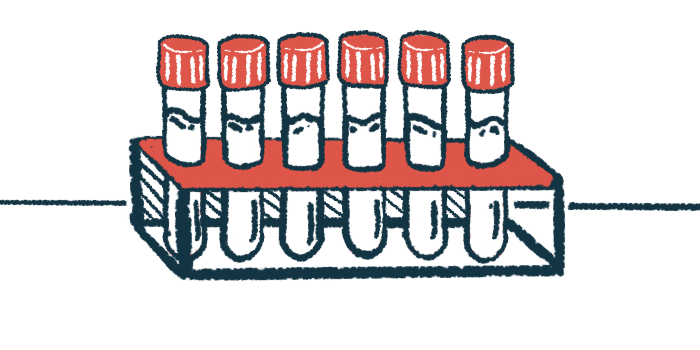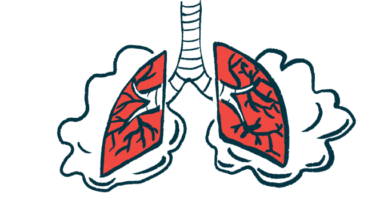Spinraza treatment won’t lead to kidney dysfunction, per study
Researchers evaluated therapy's effects in types 1, 2 SMA patients

Treatment with Spinraza (nusinersen), which was the first disease-modifying therapy to be approved for spinal muscular atrophy (SMA) back in 2016, does not lead to significant kidney dysfunction in people with SMA types 1 and 2, according to a new study from Turkey.
Further, the researchers did not find any significant alterations in platelet counts — cell fragments that bind together when they recognize damaged blood vessels — among patients with these two SMA types.
“No significant adverse effects on platelet counts or renal functions were observed,” the team wrote, noting that Spinraza treatment “did not cause significant renal [kidney] toxicity or affect platelet counts.”
In patients with SMA type 1, improvements in motor function after starting Spinraza were correlated with urine creatinine levels, supporting it as a biomarker for tracking treatment response, according to the scientists. Creatinine is a waste from protein and muscle breakdown, with high levels signaling kidney issues.
The study, “Safety and Efficacy of Nusinersen Focusing on Renal and Hematological Parameters in Spinal Muscular Atrophy,” was published in the journal Brain and Behavior.
Investigating possible kidney toxicity with Spinraza treatment
SMA is mainly caused by mutations in the SMN1 gene, which leads to reduced production of the SMN protein — needed for motor neurons, the nerve cells that control movement, to survive. Another gene called SMN2 can also make SMN protein, although less effectively than SMN1.
An approved treatment for all types of SMA, Spinraza works to help slow, or even halt, the progressive muscle wasting and weakness that characterizes the disease. The therapy, administered directly into the spinal canal, is first administered in four loading doses; patients then routinely receive Spinraza once every four months.
Spinraza is an antisense oligonucleotide, or ASO, a type of RNA-based molecule, which binds to the SMN2 messenger RNA — a template molecule used in protein production — and corrects the change that normally prevents it from making more SMN protein.
ASOs have been previously linked with kidney toxicity as well as changes in blood parameters, including coagulation abnormalities and low platelet counts, known as thrombocytopenia.
In this study, a team led by researchers from the Dokuz Eylul University Faculty of Medicine evaluated the effects of Spinraza on the number of platelets, and kidney function, in 33 people with SMA treated between 2017 and 2024. Among the patients, 15 had SMA type 1, 14 had SMA type 2, and four had SMA type 3.
Lab parameters were measured at the start of treatment, known as baseline, and then before each loading dose. Due to the limited number of patients with SMA type 3, the analysis focused on the treatment’s effects in SMA types 1 and type 2.
Urine creatinine levels may be biomarker for tracking treatment response
No significant differences were seen before and after starting Spinraza in platelet counts and the urine protein-to-creatinine ratio, an assessment of kidney function, the results showed.
At baseline, urine creatinine (median 31.5 vs. 6.5 mg/dL) and protein levels (12.5 vs. 7.5 mg/dL) were significantly higher in patients with SMA type compared with SMA type 1. In the SMA type 2 group, these parameters remained stable. However, in those with type 1 they increased significantly after the loading doses and remained stable thereafter.
Motor function in SMA type 1 patients increased significantly and progressively after the loading doses compared with baseline, as assessed by the Children’s Hospital of Philadelphia Infant Test of Neuromuscular Disorders score, the data showed. Patients with SMA type 2 also showed significant motor function improvements with treatment, as assessed with the Hammersmith Functional Motor Scale-Expanded.
Further analyses showed that the improvement in motor function in SMA type 1 correlated with an increase in urine creatinine.
“In our study, the period with the most pronounced clinical response in SMA Type 1 patients was also the period with the highest increase in [urine creatinine],” the scientists wrote.” This may be attributed to the preservation of muscle mass with [Spinraza] treatment in these patients.”
The higher urine creatinine levels in SMA type 2 patients at baseline are in agreement with their higher preservation of muscle mass, the team noted.
Overall, these findings support the potential of urine creatinine “as a biomarker for evaluating treatment response in SMA type 1,” the researchers wrote, adding that “future studies conducted with a larger, multicenter cohort could make our findings more meaningful.”









